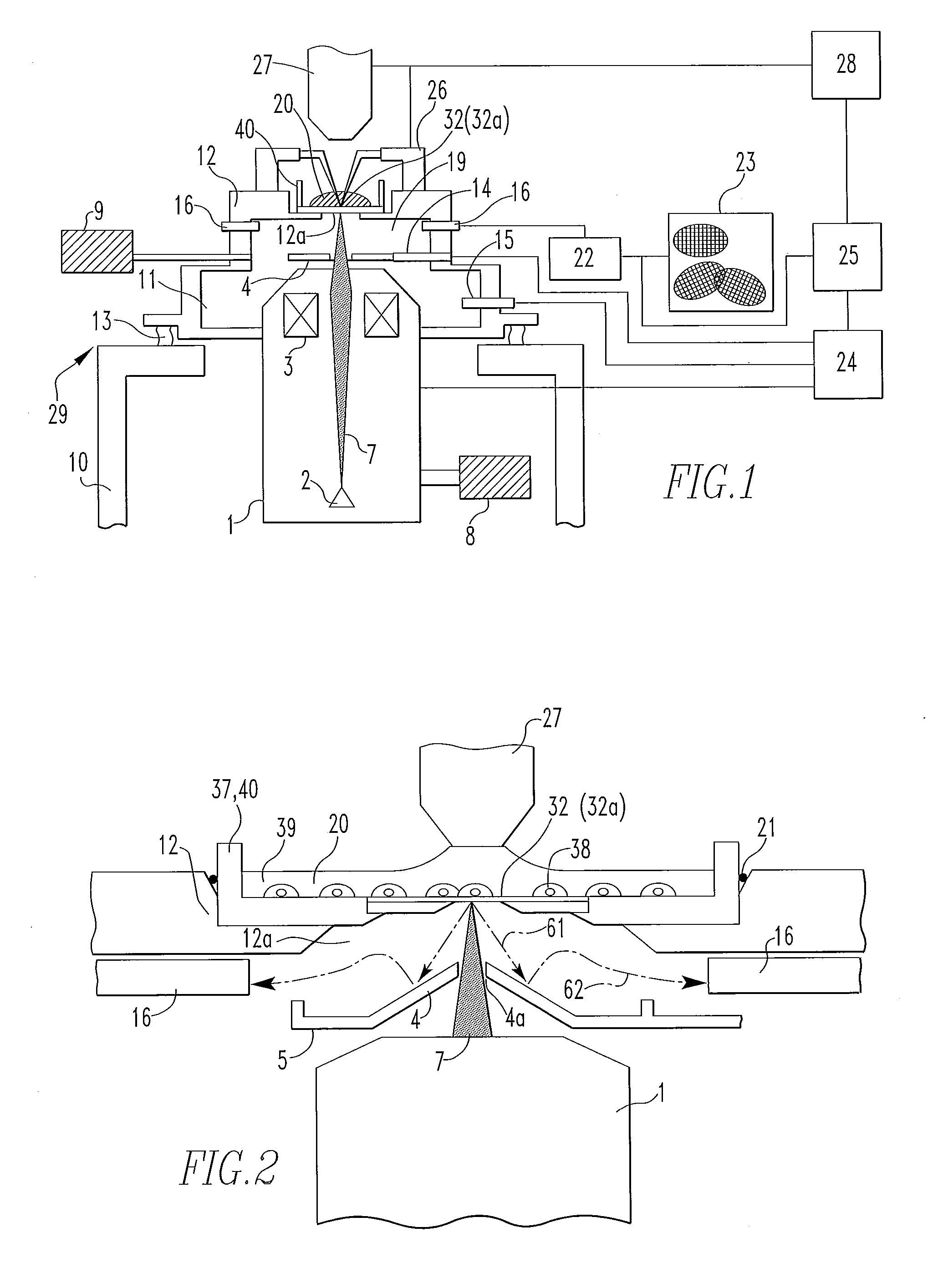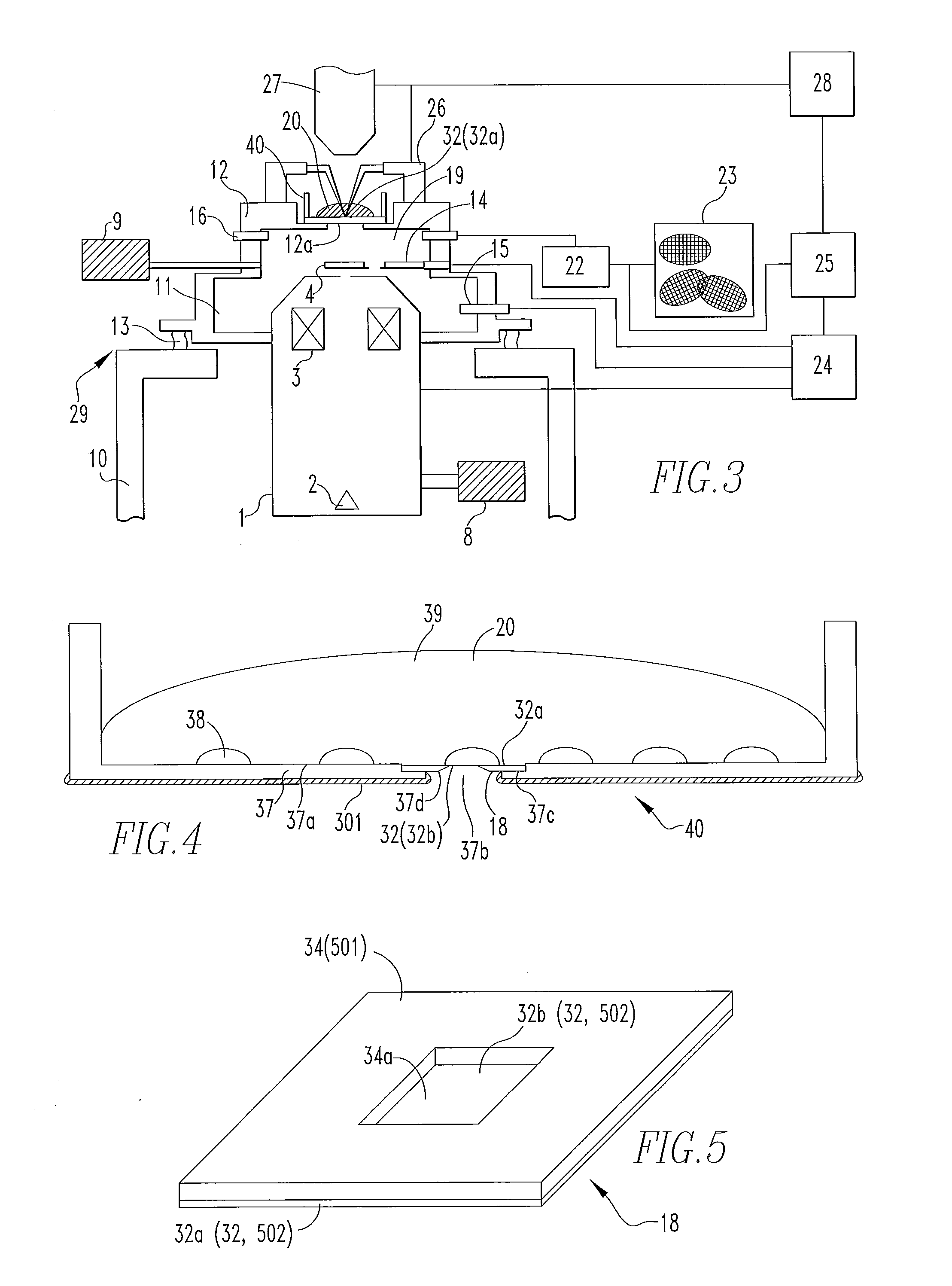Apparatus and Method for Inspecting Samples
a sample and apparatus technology, applied in the field of apparatus and methods for inspecting samples, can solve the problems of inability to observe the reaction of living cells to a stimulus, exorbitantly long observation time, and inability to achieve high throughput observation, so as to facilitate the maintenance of the apparatus and reduce the cost
- Summary
- Abstract
- Description
- Claims
- Application Information
AI Technical Summary
Benefits of technology
Problems solved by technology
Method used
Image
Examples
Embodiment Construction
[0035]Apparatus and method for inspection in accordance with the present invention are hereinafter described with reference to the drawings.
[0036]FIG. 1 is a schematic block diagram showing a first embodiment of a sample inspection apparatus, according to the present invention. The apparatus consists chiefly of an optical microscope 27, a manipulator 26, and an electron beam apparatus section 29 located under a sample holder 40.
[0037]Referring to FIG. 1, a primary beam irradiation column comprises an electron gun 2 forming an electron source. The gun 2 emits an accelerated electron beam (charged-particle beam) 7 upwardly, the beam being a primary beam. The beam 7 is focused by a condenser lens (objective lens) 3.
[0038]The focused electron beam 7 is directed at a liquid sample 20 via a sample-holding film 32 (described later) formed on the sample holder 40. The sample 20 is held on the sample holder 40. In the present embodiment, the liquid sample 20 includes biological cells 38 (to ...
PUM
 Login to View More
Login to View More Abstract
Description
Claims
Application Information
 Login to View More
Login to View More - R&D
- Intellectual Property
- Life Sciences
- Materials
- Tech Scout
- Unparalleled Data Quality
- Higher Quality Content
- 60% Fewer Hallucinations
Browse by: Latest US Patents, China's latest patents, Technical Efficacy Thesaurus, Application Domain, Technology Topic, Popular Technical Reports.
© 2025 PatSnap. All rights reserved.Legal|Privacy policy|Modern Slavery Act Transparency Statement|Sitemap|About US| Contact US: help@patsnap.com



